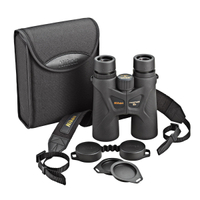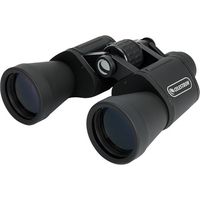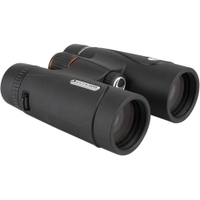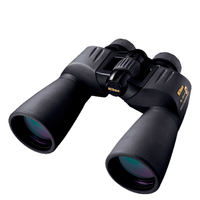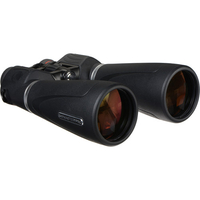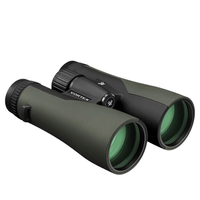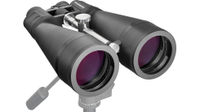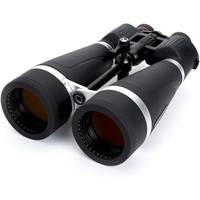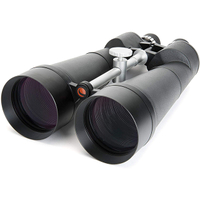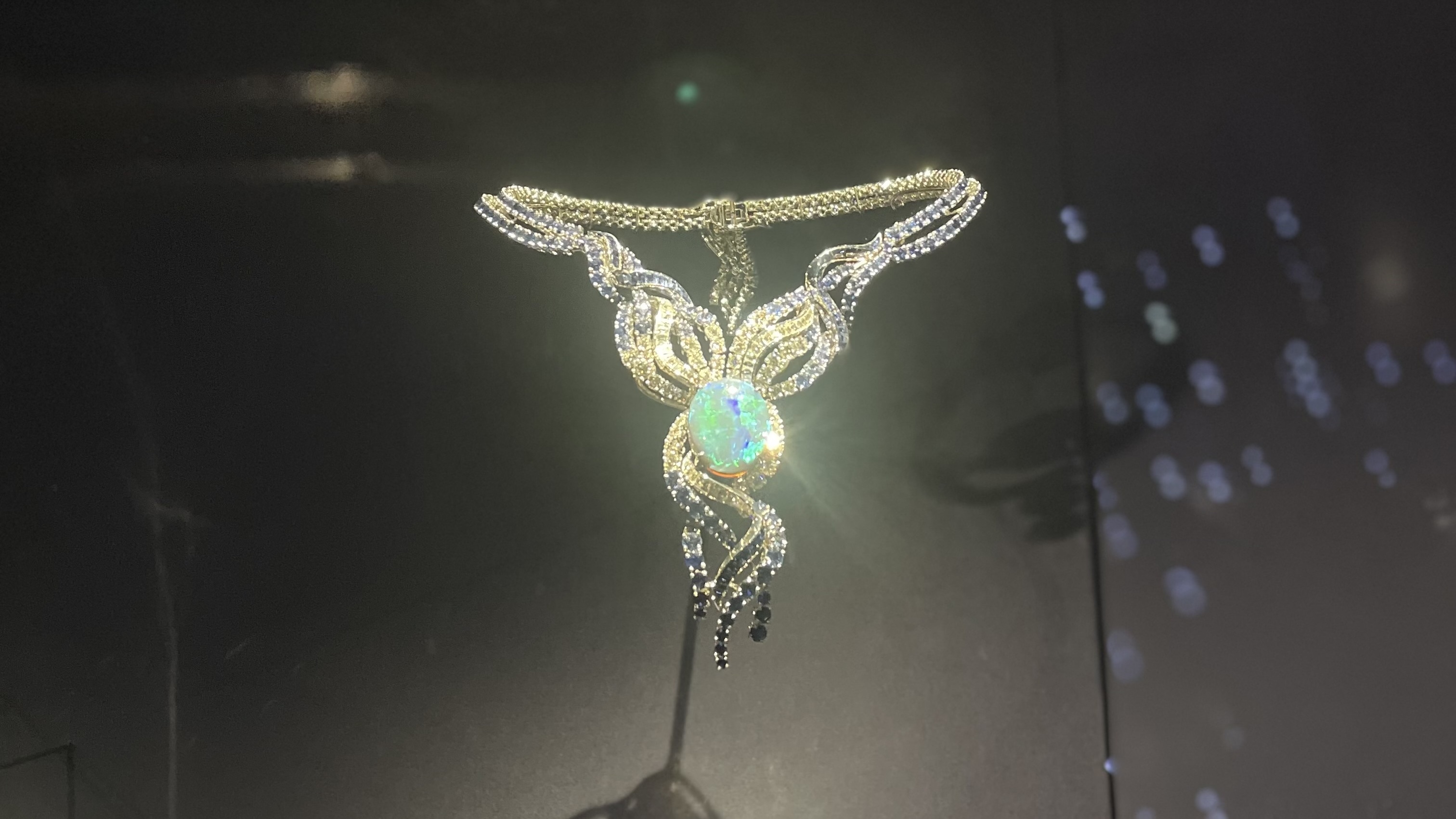Binoculars Christmas gift guide 2025
If you’re looking for the best binoculars to give as a last-minute gift this holiday season we've rounded up a fool-proof guide to the best models whether they’re a beginner or more advanced observer.
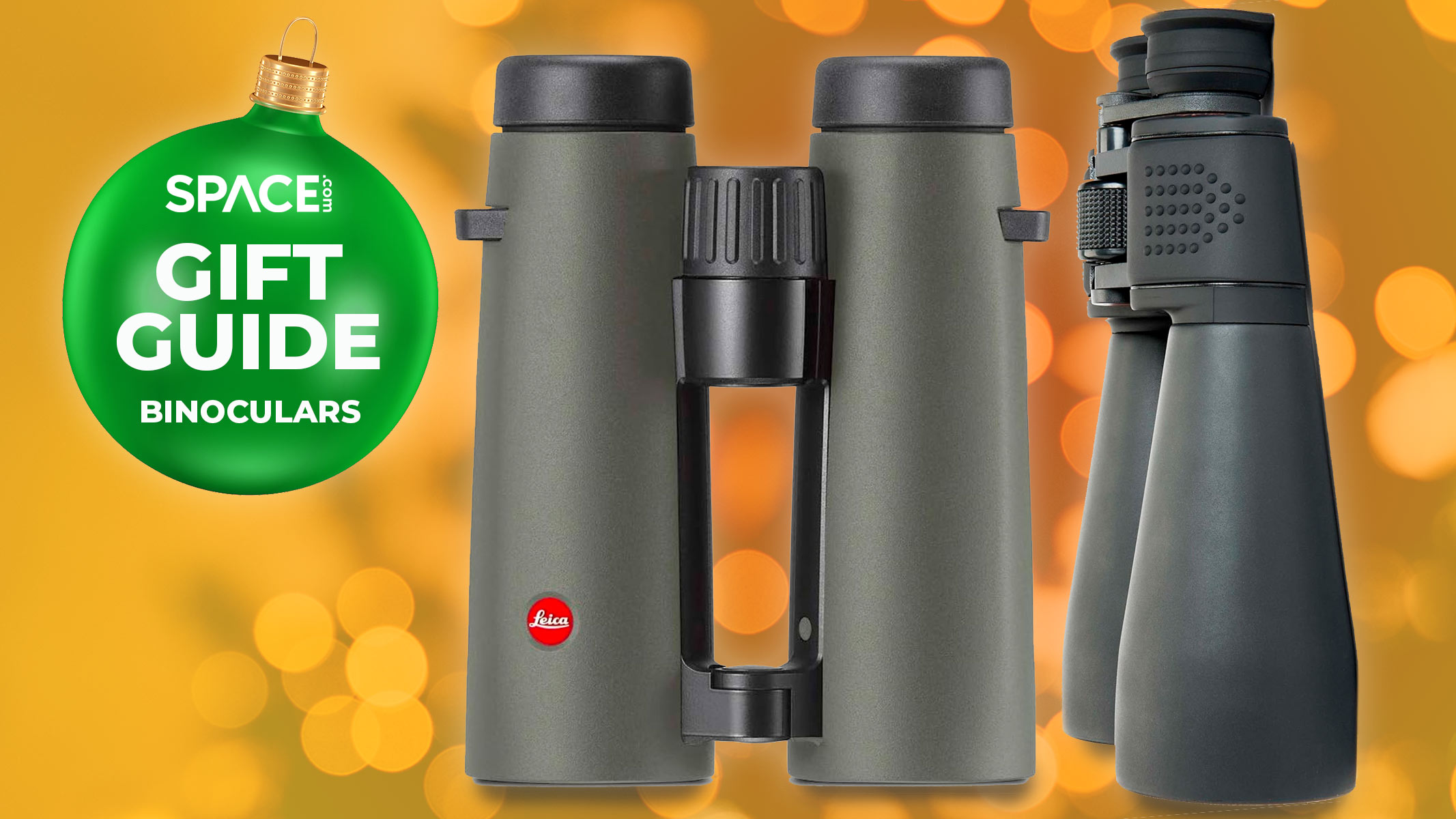
1. Binoculars for beginners
2. Binoculars for intermediates
3. Binoculars for advanced users
4. Christmas Gift Guide FAQ
Buying astronomical equipment as a gift for a loved one can be a tricky task if you don’t know much about the equipment. Binoculars are a lower-cost alternative to telescopes that can provide hours of enjoyment while stargazing, but how can you tell the good models from the bad ones? Which are the reputable manufacturers, and how do you know the binoculars that you are buying are appropriate for the experience level of their intended user?
This guide aims to ensure that the binoculars you choose meet the requirements of the astronomer in your life; that if they are a beginner then they are easy to use and multi-purpose; that if they are of a more intermediate ability that the binoculars give them that big step up to the next level; and if they are experienced and dedicated observers, that the binocular can meet their demands. You will also want to avoid breaking the bank if at all possible
If you have time to do a bit more research and shopping around, then we recommend that you check out our guide to the best binoculars. On the other hand, if the recipient has an interest in astrophotography, or more detailed planetary observing, then you may find reading our telescope Christmas gift guide useful for finding a more focused astronomical instrument.
Beginner
Binoculars make for simple but very effective stargazing. They are easy to use, can be pointed in any direction without worrying about motorized mounts and if a tree is in the way you can just walk around it with your binoculars. They also have a wide field of view that makes them perfect for just cruising through the Milky Way.
When choosing a binocular for a beginner, there are three things that you need to consider. First and foremost is the quality of the optics, because you want to be able to see enough through the binoculars to hold your interest and maybe spur a life-long interest. The key criteria are the size of the binocular aperture and the amount of magnification. The larger the aperture and the higher the magnification, generally the narrower the field of view, which makes deep-sky objects such as star clusters appear larger when you look through the optical system. The sweet spot is generally regarded as 10x50 (10x magnification, 50mm aperture) but 8x42 is also sufficient to give wide, sweeping views of the stars. Any smaller than this and their use for astronomy is limited.
Related to the quality of the optics is price. Although there are many 10x50 binoculars that are inexpensive, the better quality the lenses, the more you have to pay for them. When buying binoculars for beginners, it is important to balance the amount of money you shell out for them with the quality of the views. Beginners in any hobby are often fickle – you don’t know how long they’re going to stick with the hobby or lose interest. If the latter happens, you don’t want to have spent hundreds of dollars or pounds on an instrument they’re not going to use. But at the same time, you want binoculars that provide the best views possible for the money, so that hopefully they are spellbinding enough to maintain a beginner’s interest long-term.
If their interest begins to wane, then the investment in the binocular might not go to waste if the binocular is multi-purpose, adept at daytime viewing as well as night-time. So, if you’ve got a bird-watcher in your life who also fancies looking at the stars, getting them a binocular that can do both jobs is the optimum choice.
Get the Space.com Newsletter
Breaking space news, the latest updates on rocket launches, skywatching events and more!
If you’re looking for high-quality binoculars with great optics that don’t break the bank, then the Nikon Prostaff P3 binocular fits the bill. This 8 x 42 binocular has 42mm apertures and 8x magnification. Admittedly they are a little on the small side — 10x50 is normally recommended as the minimum for astronomy — but it’s surprising how much you can see through 8x42s. It’s lightweight at just over 1lb (465g) so is easy to carry and won’t result in arm shake. Plus, the Nikon Prostaff P3 binocular is usefully multi-purpose, adept at sweeping through the star-strewn Milky Way at night and working as a nature binocular during the day.
Primarily marketed by Celestron as a daytime binocular, Celestron’s UpClose G2 binoculars could be an attractive budget gift because they have the magic numbers: 10x50, meaning 10x magnification and 50mm aperture. The field of view is about 6.5 degrees, meaning deep-sky objects appear larger than in 8x42 binoculars with a wider field of view, while they let in enough light and have high enough magnification to resolve more details on the moon, for example. The optics aren’t perfect— they lose sharpness around the edges, there’s a degree of vignetting and focusing isn’t easy — but for the price, you can’t go wrong in gifting an instrument that can give the beginner astronomer in your life a taste of what stargazing has to offer without breaking the bank – well, at least not until they catch the astronomy bug and want a larger instrument!
The Celestron TrailSeeker binocular range are roof-prism binoculars rather than porro-prism, meaning that the reflecting prism inside the binocular consists of two faces at 90 degrees to one another that the light reflects off. Typically roof-prism binoculars have reduced contrast and resolution, but the TrailSeekers use coated glass to improve light transmission, resulting in brighter images. In particular, if you choose the ‘ED’ (Extra Dispersion) versions of the TrailSeekers you’ll be greeted with even more improved views. Though just 8x42 in magnification and size, you’ll be able to see hundreds of stars, obtain great views of brighter star clusters such as the Pleiades, and even resolve the Andromeda Galaxy as an elongated fuzz.
Intermediate
Users of intermediate-level binoculars are often more experienced astronomers who use their binoculars for niche observing — it could be anything from variable and double stars, to star clusters. In which case, the user is usually more demanding of what their binocular can offer them. Such binoculars are designed around night-time use, and although of course they can be used ion the day, they are not particularly optimized for taking on hikes and bird-watching. These binoculars tend to be larger and heavier, which cuts down on how easy it is to walk around with them, and for serious observers who intend to spend a long time with their binoculars, the addition of a tripod with pan-head mount is essential. The optics of such instruments are also more advanced, improving contrast, cutting down on chromatic aberration, and providing bright, crisper views. You should notice a significant improvement over the views through budget telescopes for beginners.
The next step up is either more aperture or more magnification. Nikon’s Action EX 12x50 binoculars offer more magnification, making for a narrower field of view and making objects seem even larger through your binoculars. Jupiter’s moons stand out, star clusters appear even brighter, the surface of the Moon appears wonderful with dark maria and stark craters, and sweeping through the Milky Way is a joy. The downside is that the binoculars are a little larger and a lot heavier, weighing in at 2.3lbs/1kg – more than twice the weight of the Nikon Prostaff P3 8x42 binoculars, for example. This means it's harder to hold the binocular steady, and your arms will start to ache.
The SkyMaster Pro 15x70s is a step-up in magnification, aperture, weight and performance. The 15x magnification and 70mm aperture is able to show you so much more than common 10x50 binoculars. the color of stars standout, so Betelgeuse in Orion looks startlingly red, for instance (so does Mars, for that matter). When turned to galaxies the universe is revealed to you — not only can you see the elongated fuzz of M31, the Andromeda Galaxy, you’ll also be able to pick out its small satellite galaxies M32 and M110. Further afield, the pairing of Bode’s Galaxy (M81) and the Cigar Galaxy (M82) in Ursa Major are obvious, and you’ll even be able to spot the fuzzy elliptical shape of the giant galaxy M87 in the Virgo Cluster, 55 million light years away. While you still won’t be able to resolve details on planets, not even Saturn’s rings, their brighter moons are obvious and as for our Moon, it appears stunning through the 15x70s, with minimal false color fringing.
Unlike the other binoculars in this list of instruments for astronomers of intermediate experience, the Vortex Crossfire binocular is just your standard 10x50 specification with a field of view of 6.1 degrees. They are even of roof-prism design, which usually results in dimmer images, but what makes the Crossfire binoculars stand out is their HD lenses, which boosts contrast and reduces color fringing from chromatic aberration, although we could detect some color around the limb of the Moon, which otherwise looks fantastic. Multiple lens coatings also improve light transmission and cut down on reflections. At 862g/30.4oz, they are not too heavy though you may prefer to mount on a tripod when observing for long periods.
Advanced
Binoculars in the advanced category are often as powerful as telescopes themselves. No longer are you limited to stars and the Moon, but planets start to take shape as real worlds, and far away galaxies become genuine targets for you to pursue. The downside is that these binoculars are heavy, which means investing in a sturdy tripod with a panhandle, or even a counterweighted arm.
You may be wondering why not just buy a telescope? Binoculars, even large heavy ones, still have more of a grab-and-go feel about them over telescopes. Binoculars also have wider fields of view — you can literally feel like you’re floating through the stars. Plus, using two eyes is more comfortable than squinting through one eye at a telescope, and technically with a binocular, you get two telescopes side-by-side, so the field of view is even more extensive.
If you feel that your recipient is ready for a telescope, then be sure to check out our Christmas telescope guide.
This well-priced option is a great stepping stone to the world of observing with larger binoculars. The 80mm objectives are on a par with some smaller telescopes, except with binoculars you of course get two of them. They’re not too heavy, weighing in at 4.75lbs/2.15kg, but you will want to pop them on top of a tripod for prolonged viewing. A central bar with a sliding tripod bracket enables this.The lenses’ multi-coated optics provide good contrast and bright images across the 3.2-degree-wide field of view – you’ll notice how much more zoomed in objects are compared to, say 10x50s with their 6-degree field of view. The only downside is that this Orion binocular has a central focus wheel that adjusts focusing for both eyepieces simultaneously. While this is typically the case for less expensive, smaller models, most large binoculars sport individual focusing on each eyepiece for greater accuracy.
The SkyMaster Pro 20x80 binocular has all the benefits of other, smaller models in the range, with the added light-gathering power of larger apertures and higher magnification to get more out of each object you view. While more expensive than the Orion 20x80 binocular, it has individual eyepiece focusing, multi-coated lenses and porro prisms that produce superior views with a limiting stellar magnitude of 12, which opens the sky up to a host of galaxies, globular clusters, star clusters and perhaps even a few planetary nebulas, such as the Ring Nebula — although you’d need good conditions to see its diffuse form. The binocular weighs a little more than the Orion binocular, at 6lbs/2.5kg, so a tripod is definitely in order.
These are the big brother of the 15x70 SkyMaster Pro binocular that we recommended for intermediate users and the aforementioned 20x80 SkyMaster Pro binocular. And the emphasis is on ‘big’ — at 4.4kg/9lbs 12 oz, it is heavy, and at 38.8cm/15.28 inches, it is long. But this binocular is worth it: with 25x magnification and 100mm lenses, it is equivalent to a solid 4-inch refracting telescope, except with this binocular you can use the comfort of two eyes, not just one, so it’s almost like looking through two telescopes. Faint galaxies can be spotted in great detail, and even the bands on Jupiter and Saturn’s rings. But you will definitely need a tripod for this beast — and the sturdier the better.
Binoculars Holiday gift guide FAQ
Is a binocular a good gift?
A binocular is an excellent gift for all levels and ages of astronomers. Nearly everyone who starts out in astronomy thinks that they must have a telescope. However, humble binoculars are incredibly useful for amateur astronomy and sometimes can even prove more effective than a telescope for viewing some objects.
A binocular is really easy to use and requires very little maintenance. All you need to do is hold them up to your eyes and you are viewing. Also they will give you an image in the correct orientation. Telescopes can either give the observer an inverted image, so the top is at the bottom as well as left and right being reversed; or at least often make the image left and right reversed, which can be confusing. There are good reasons for this and you do get used to it, but binoculars don't have this potential disadvantage. This then makes them ideal for beginners and younger observers, who may find using a telescope a little too challenging.
What strength of binocular is best?
There are a few things to look out for when you are buying binoculars for skywatching. The most important feature of such instruments is their size. The ideal diameter for the object lenses, the ones nearest to the sky, is 50mm. That is, each lens is 50mm across. Next is the amount of magnification.
You are likely to have come across the numbers 7x50 or 10x50: these tell you that the magnification is either 7x or 10x while the second part of the number, the '50', tells you that the aperture of the main lenses are 50mm. If you are buying binoculars mainly for astronomy, do get the best quality you can afford.
It is best not to get binoculars with excessive magnifications. There are several reasons for this. When you increase magnification you will also increase the magnification of your natural hand shake, which can mean that the image is continually dancing around and can make observing challenging, especially if you are trying to study an object in any detail.
Around 10x is therefore the most magnification you should consider, unless you are prepared to tripod mount the instruments. There are occasions where it can be useful to tripod mount even fairly low power binoculars though, such as for extended viewing. With many makes and models it is possible, with the addition of a special bracket, to mount the binoculars onto a photographic tripod. Any binoculars with a magnification of 15x or over will almost certainly need mounting in such a way, as they usually have larger object lenses and are much heavier. If you are buying a tripod to mount your binoculars, do make sure it is very sturdy, as binoculars can be at least as heavy as a modern camera.
Which are more powerful: 10x42 or 10x50?
While these binocular are both able to magnify targets by 10-times, the 10x50s are able to collect more light thanks to their 50mm-diameter objective lenses.
Which is the best binocular to buy?
This largely depends on your budget. However, the quality of the optical system is an essential feature to consider for high-definition, excellent contrast and crystal clear views. You’ll discover two major kinds of binoculars at reputable stockists: the porro-prism and roof-prism. Choose the Porro-prism design for a reliable and affordable piece of kit, making sure that the lenses feature a coating and the glass is of a decent quality (we can vouch for multi-coated optics and BaK4 prisms). If you wear spectacles, we advise choosing binoculars that offer eye relief of at least 14 to 15mm.
Whichever model you decide to go for there are plenty on the market to suit a variety of budgets, observing interests and level of skywatcher. If none of the above take your fancy, then be sure to check out our best binoculars guide.
Join our Space Forums to keep talking space on the latest missions, night sky and more! And if you have a news tip, correction or comment, let us know at: community@space.com.

Gemma currently works for the European Space Agency on content, communications and outreach, and was formerly the content director of Space.com, Live Science, science and space magazines How It Works and All About Space, history magazines All About History and History of War as well as Science, Technology, Engineering, Arts and Mathematics (STEAM) kids education brand Future Genius. She is the author of several books including "Quantum Physics in Minutes", "Haynes Owners’ Workshop Manual to the Large Hadron Collider" and "Haynes Owners’ Workshop Manual to the Milky Way". She holds a degree in physical sciences, a Master’s in astrophysics and a PhD in computational astrophysics. She was elected as a fellow of the Royal Astronomical Society in 2011. Previously, she worked for Nature's journal, Scientific Reports, and created scientific industry reports for the Institute of Physics and the British Antarctic Survey. She has covered stories and features for publications such as Physics World, Astronomy Now and Astrobiology Magazine.
